e-Shram Card Schemes
The Government of India has consistently focused on the welfare of workers, especially those in the unorganised sector. To extend social security and employment benefits to these workers, the Ministry of Labour & Employment launched the e-Shram portal. This portal serves as a national database for unorganised workers and connects them to various government schemes designed to improve their social and economic conditions. In this article, we will explore the key schemes associated with the e-Shram Card, which provide crucial support in terms of pension, insurance, employment, and more.
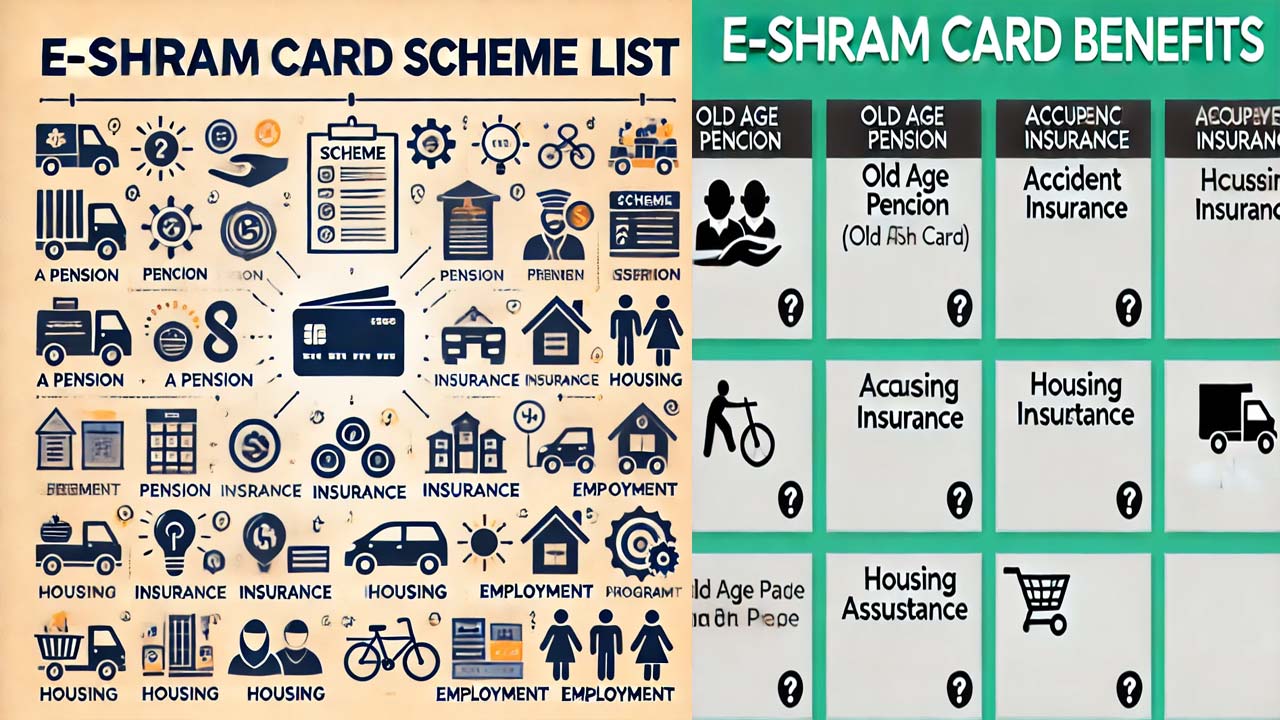
Social Security Welfare Schemes
1. Pradhan Mantri Shram Yogi Maan-Dhan Yojana (PM-SYM)
Objective:The PM-SYM scheme is a voluntary and contributory pension scheme aimed at providing old age protection and social security to unorganised workers.
Key Features:
- Contribution: The scheme requires a monthly contribution ranging from ₹55 to ₹200, depending on the age of entry. The beneficiary contributes 50% of the amount, while the central government matches the contribution.
- Eligibility: Indian citizens aged 18-40 years, working in the unorganised sector, with a monthly income below ₹15,000 and not a member of EPFO, ESIC, or NPS.
- Benefits: After attaining the age of 60, beneficiaries receive a monthly pension of ₹3,000. In the event of the beneficiary’s death, the spouse is entitled to 50% of the pension. If both husband and wife join the scheme, they receive a joint pension of ₹6,000 per month.
2. National Pension Scheme for Traders and Self-employed Persons (NPS-Traders)
Objective:This scheme provides pension benefits to small shopkeepers, self-employed persons, and traders who are not covered by other pension schemes.
Key Features:
- Contribution: Similar to PM-SYM, with a monthly contribution of ₹55 to ₹200, matched by the central government.
- Eligibility: Indian citizens aged 18-40 years, with an annual turnover not exceeding ₹1.5 crore, and not covered under EPFO, ESIC, or PM-SYM.
- Benefits: A monthly assured pension of ₹3,000 after the age of 60.
3. Pradhan Mantri Jeevan Jyoti Bima Yojana (PMJJBY)
Objective:PMJJBY provides life insurance coverage to account holders in case of death due to any cause.
Key Features:
- Eligibility: Indian citizens aged 18-50 years, holding a Jandhan or savings bank account linked with Aadhaar.
- Benefits: In the event of the policyholder’s death, a sum of ₹2 lakh is paid to the nominee. The annual premium is ₹436, auto-debited from the bank account.
4. Pradhan Mantri Suraksha Bima Yojana (PMSBY)
Objective:PMSBY provides accident insurance coverage for accidental death or disability.
Key Features:
- Eligibility: Indian citizens aged 18-70 years with a Jandhan or savings bank account linked with Aadhaar.
- Benefits: The scheme offers ₹2 lakh for accidental death or full disability and ₹1 lakh for partial disability. The annual premium is ₹20, auto-debited from the bank account.
5. Atal Pension Yojana (APY)
Objective:APY aims to provide pension benefits to unorganised workers after retirement, ensuring financial stability in old age.
Key Features:
- Eligibility: Indian citizens aged 18-40 years with a bank account linked to Aadhaar.
- Benefits: Depending on the contribution, the pension amount ranges from ₹1,000 to ₹5,000 per month. Upon the contributor’s death, the spouse receives the pension or the accumulated amount is passed on to the nominee.
6. Public Distribution System (PDS)
Objective:PDS ensures food security by distributing essential food grains to families below the poverty line.
Key Features:
- Eligibility: Families below the poverty line, families without members aged 15-59, families with disabled members, and those engaged in casual labor.
- Benefits: Each eligible family receives 35 kg of rice or wheat monthly. Migrant workers can avail of benefits under the One Nation One Ration Card (ONORC) system, allowing them to receive food grains wherever they are working.
7. Pradhan Mantri Awas Yojana – Gramin (PMAY-G)
Objective:PMAY-G aims to provide affordable housing to rural families, particularly those with no permanent job or engaged in casual labor.
Key Features:
- Eligibility: Families with no member aged 15-59, families with disabled members, and those involved in casual labor.
- Benefits: Beneficiaries receive financial assistance of ₹1.2 lakh in plain areas and ₹1.3 lakh in hilly areas for constructing a house.
8. National Social Assistance Programme (NSAP)
Objective:NSAP provides financial assistance to elderly citizens with little or no means of subsistence.
Key Features:
- Eligibility: Indian citizens with no regular means of income.
- Benefits: Central government contributes ₹300 to ₹500, with state governments adding up to a total pension of ₹1,000 to ₹3,000 per month, depending on the state’s contribution.
9. Ayushman Bharat – Pradhan Mantri Jan Arogya Yojana (AB-PMJAY)
Objective:AB-PMJAY provides health insurance coverage to vulnerable families for secondary and tertiary care hospitalization.
Key Features:
- Eligibility: Families belonging to SC/ST households, families with no male member aged 16-59, beggars, and those surviving on alms.
- Benefits: Health coverage of ₹5 lakh per family per year for hospitalization, free of cost.
10. Health Insurance Scheme for Weavers (HIS)
Objective:HIS provides health insurance to weavers, covering both pre-existing and new diseases.
Key Features:
- Eligibility: Indian weavers earning at least 50% of their income from handloom weaving.
- Benefits: A comprehensive package of ₹15,000 covers maternity benefits, eye treatment, hospitalization, and other medical expenses.
11. Pradhan Mantri Kisan Mandhan Yojana
Objective:This scheme provides pension benefits to small and marginal farmers after they reach 60 years of age.
Key Features:
- Eligibility: Indian citizens aged 18-40 years with cultivable land up to 2 hectares.
- Benefits: An assured pension of ₹3,000 per month after 60 years, with matching contributions from the government.
12. National Safai Karamcharis Finance and Development Corporation (NSKFDC)
Objective:NSKFDC provides financial assistance to Safai Karamcharis and manual scavengers for income-generating activities and education.
Key Features:
- Eligibility: Indian citizens involved in sanitation work and manual scavenging.
- Benefits: Financial assistance is provided for viable income-generating schemes, education, and skill training.
13. Self Employment Scheme for Rehabilitation of Manual Scavengers (SRMS)
Objective:SRMS aims to rehabilitate manual scavengers by providing them with financial assistance and skill training.
Key Features:
- Eligibility: Identified manual scavengers and their dependents.
- Benefits: One-time cash assistance of ₹40,000 and free skill training with a monthly stipend of ₹3,000.
Employment Schemes
1. Mahatma Gandhi National Rural Employment Guarantee Act (MGNREGA)
Objective:MGNREGA provides guaranteed employment to rural citizens, ensuring a minimum of 100 days of wage employment per household per year.
Key Features:
- Eligibility: Indian citizens above 18 years of age residing in rural areas.
- Benefits: Applicants are entitled to work within 15 days of application, with a wage rate that has been increased to ₹220 per day.
2. Deen Dayal Upadhyay – Gramin Kaushalya Yojana (DDU-GKY)
Objective:DDU-GKY aims to skill rural youth and provide them with jobs that pay regular monthly wages.
Key Features:
- Eligibility: Indian citizens aged 15-35 years (relaxed to 45 years for women and vulnerable groups).
- Benefits: The scheme focuses on skill development to ensure employment with sustainable wages.
3. Garib Kalyan Rozgar Yojana
Objective:This scheme provides employment to people working in identified sectors like PM Kusum, cattle sheds, and construction of wells, among others.
Key Features:
- Eligibility: Indian citizens working in any of the 25 identified sectors.
- Benefits: The scheme provides employment for 125 days.
4. Deen Dayal Upadhyaya Antyodaya Yojana (DAY)
Objective:DAY aims to enhance skills and support self-employment for the poor.
Key Features:
- Eligibility: Any Indian citizen interested in skill training.
- Benefits: The scheme provides financial support for skill development and self-employment initiatives.
5. PM Street Vendor’s AtmaNirbhar Nidhi (PM SVANidhi)
Objective:PM SVANidhi provides financial assistance to street vendors to help them restart their businesses post-COVID-19 lockdown.
Key Features:
- Eligibility: Indian street vendors with a Certificate of Vending or Identity Card issued by Urban Local Bodies.
- Benefits: The scheme offers a working capital loan of up to ₹10,000, with incentives for regular repayment and digital transactions.
6. Pradhan Mantri Kaushal Vikas Yojana (PMKVY)
Objective:PMKVY aims to provide skill training to youth to enhance their employability and support sustainable livelihood opportunities.
Key Features:
- Eligibility: Indian citizens aged 18-45 years, including 10th pass and 12th class dropouts.
- Benefits: The scheme supports skill training, certification, and the establishment of skill centers, benefiting 8 lakh youth over its tenure.
7. Prime Minister Employment Generation Programme (PMEGP)
Objective:PMEGP provides financial assistance to individuals for setting up new enterprises.
Key Features:
- Eligibility: Indian citizens above 18 years, with at least an VIII standard pass for projects costing above ₹10 lakh (manufacturing sector) or ₹5 lakh (service sector).
- Benefits: The scheme offers financial assistance to establish new businesses, contributing to self-employment and economic growth.
The e-Shram Card is a gateway to numerous welfare and employment schemes designed to uplift India’s unorganised workforce. By registering on the e-Shram portal, workers can access these benefits, ensuring financial security, social protection, and opportunities for skill development and employment. Whether it’s old age pension, insurance coverage, housing, or employment generation, these schemes collectively work towards building a more inclusive and equitable society. It is crucial for eligible workers to take advantage of these programs and secure a better future for themselves and their families.
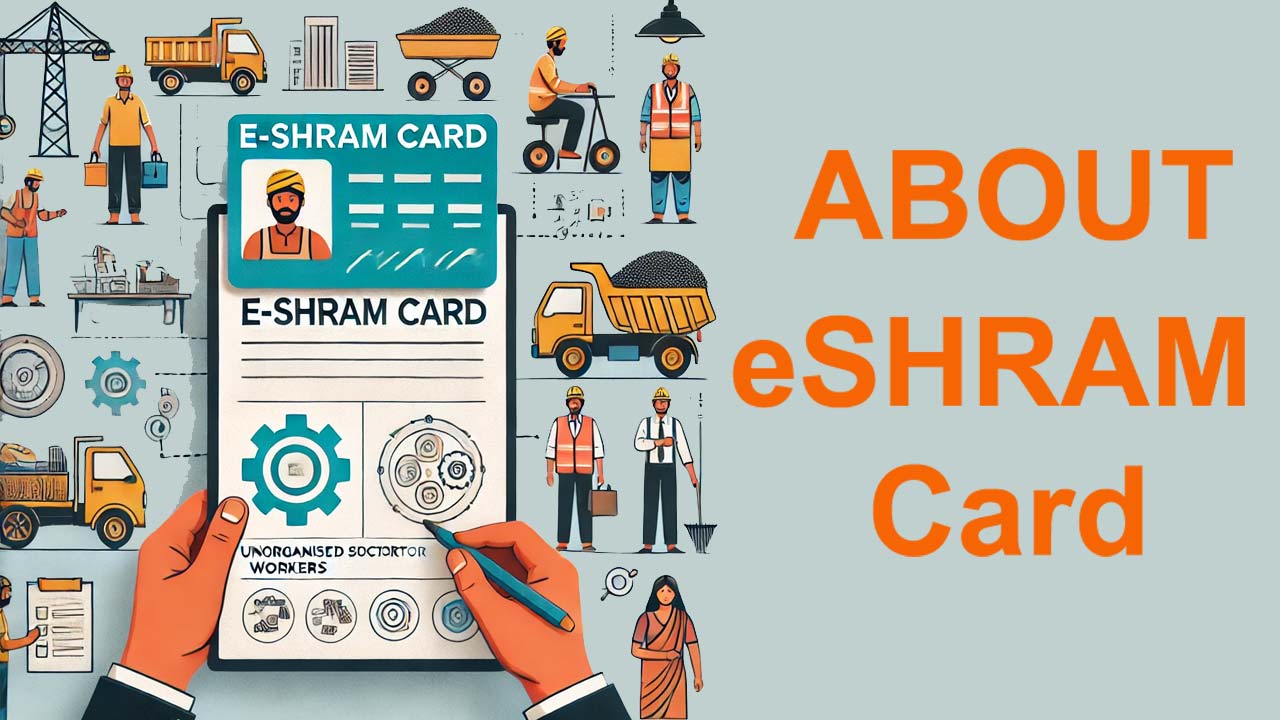
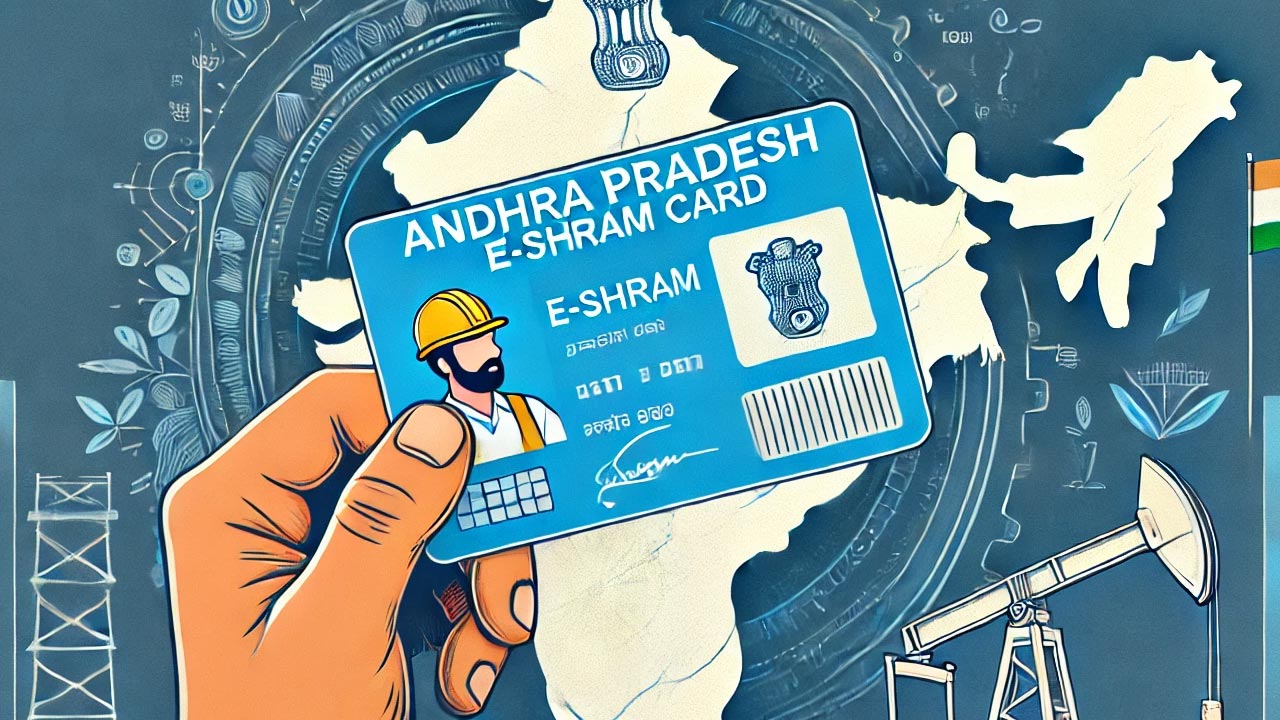
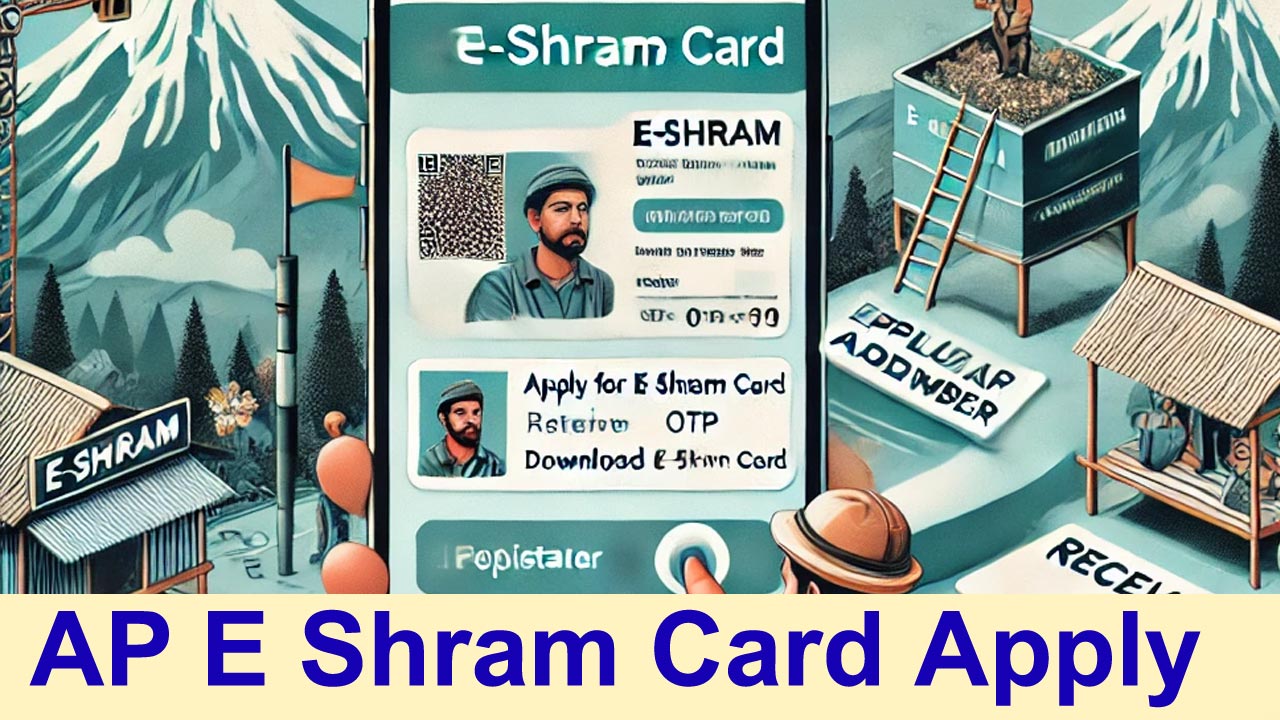

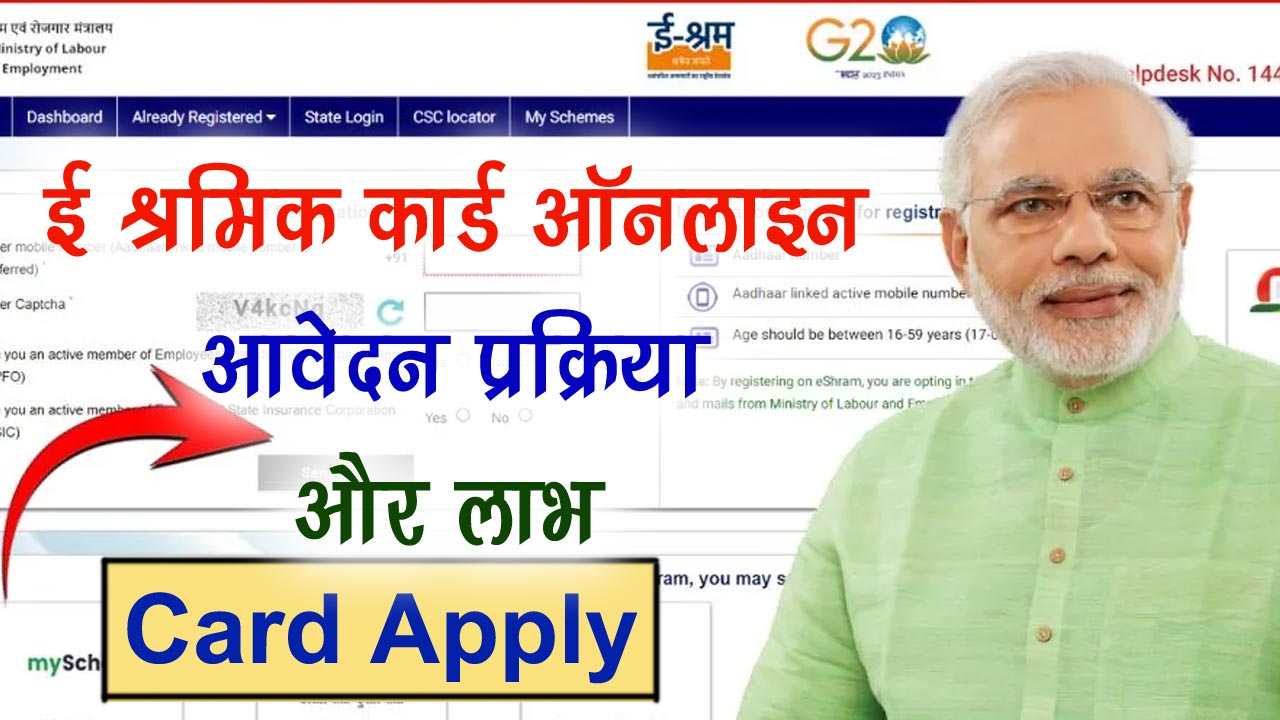
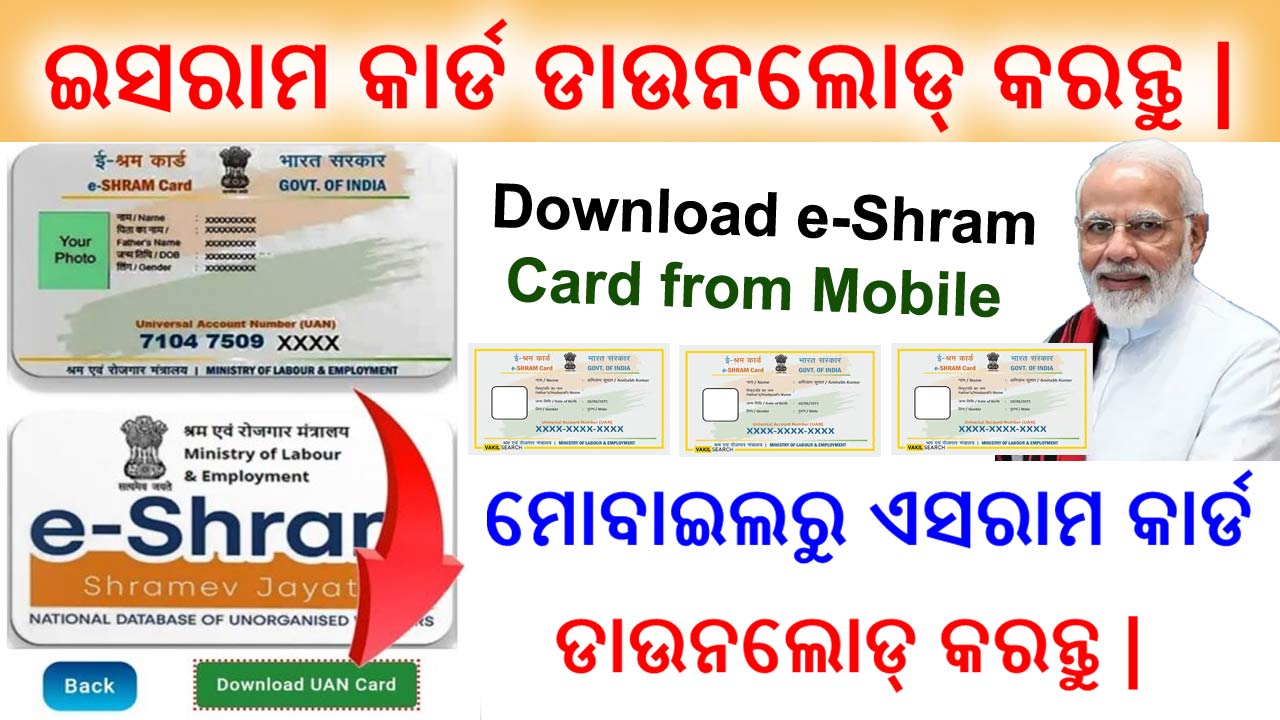
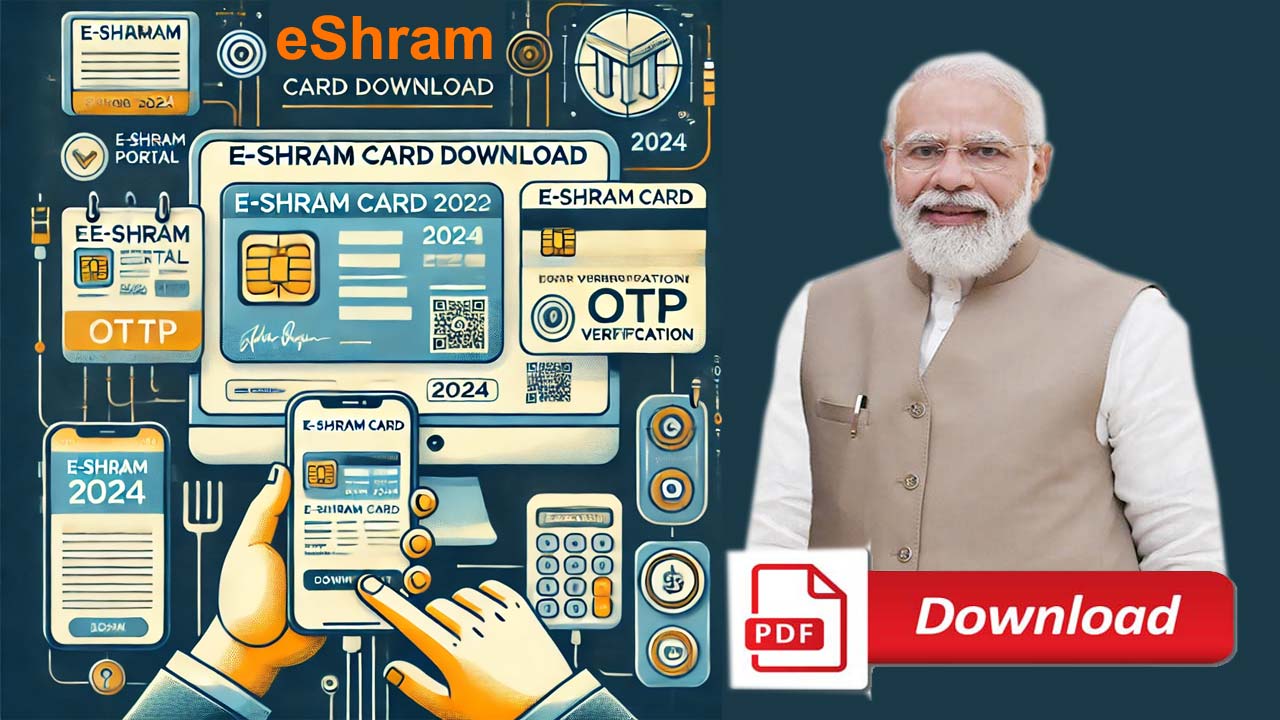
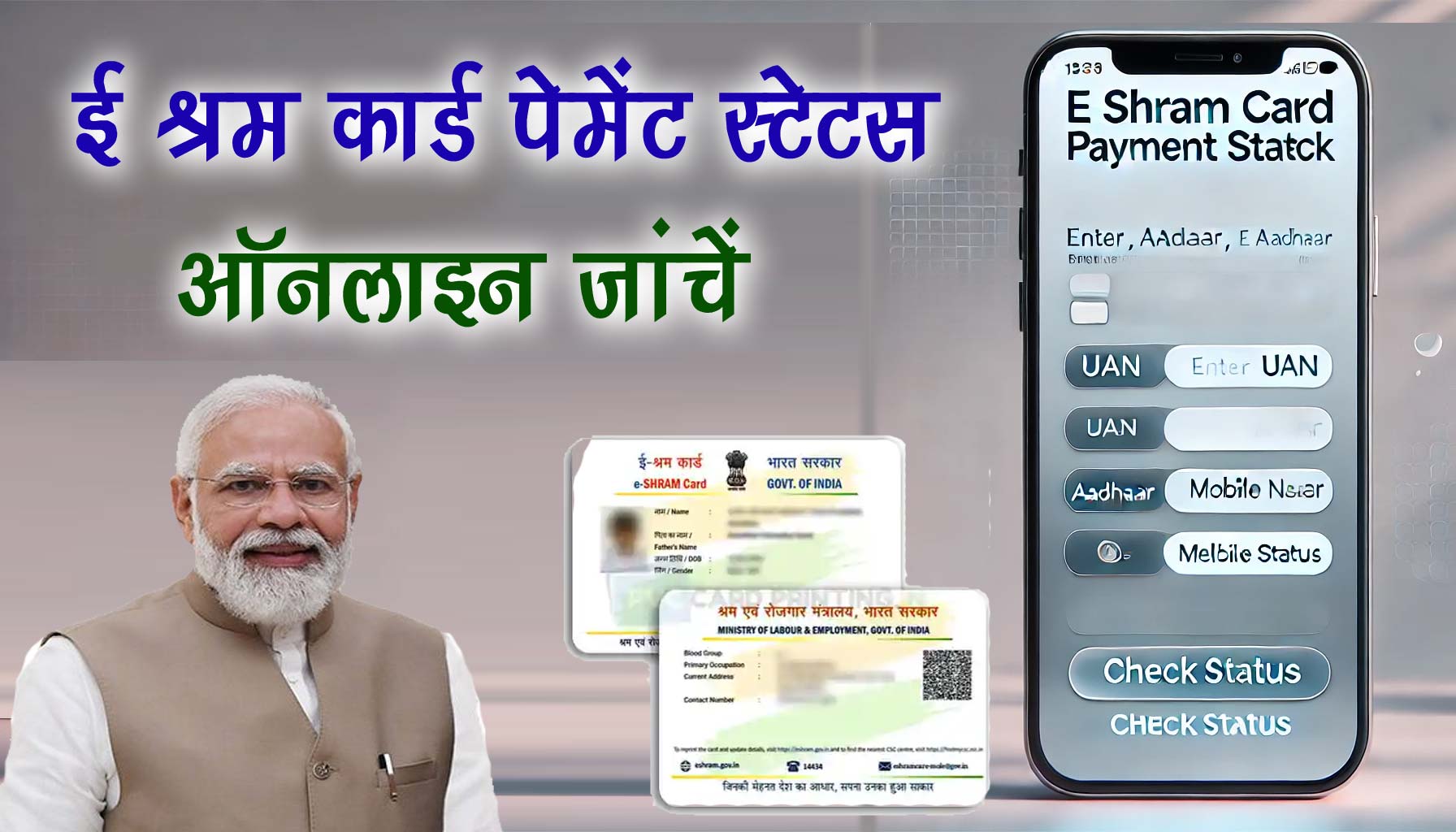
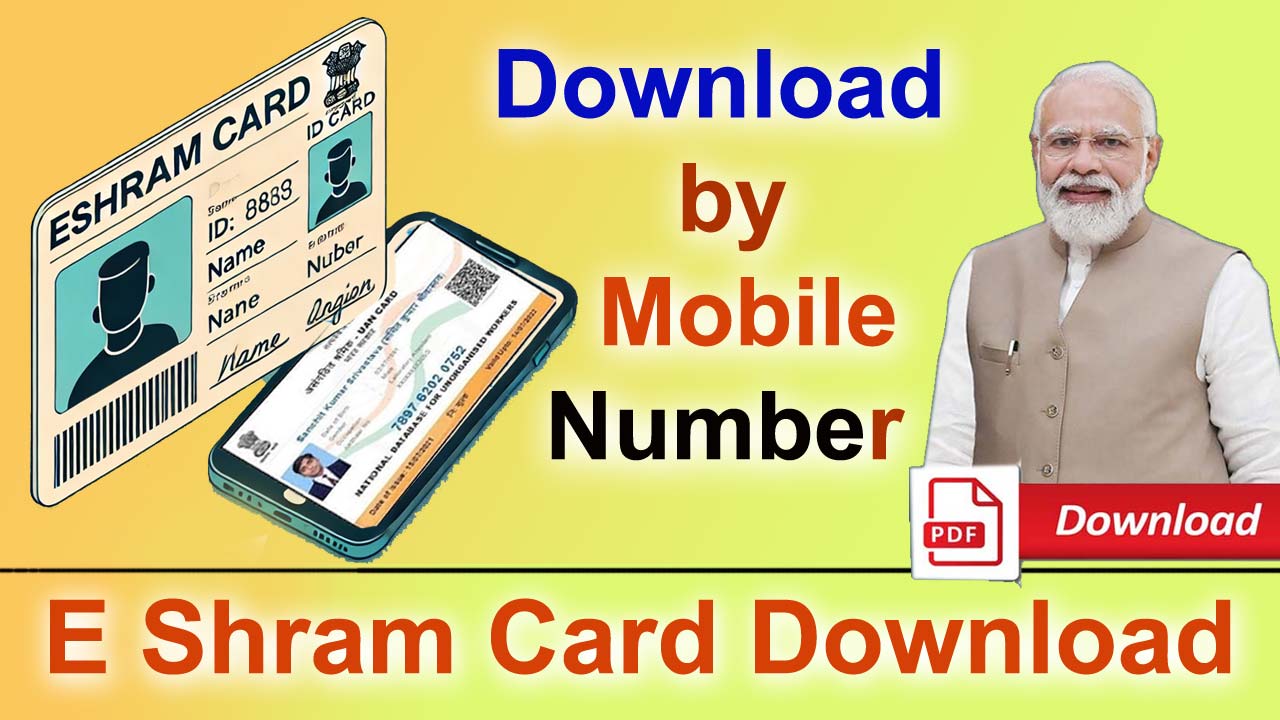
Comments Shared by People